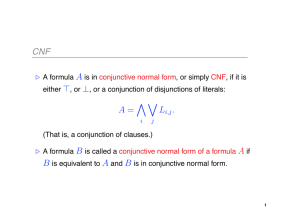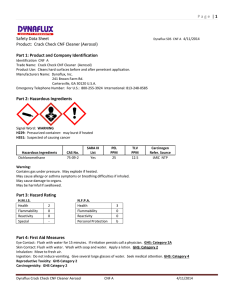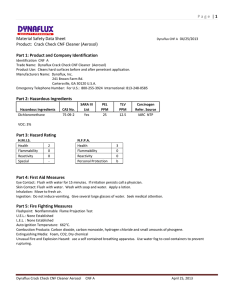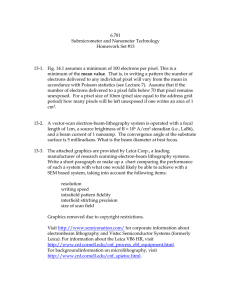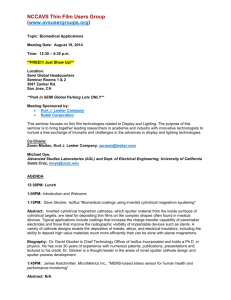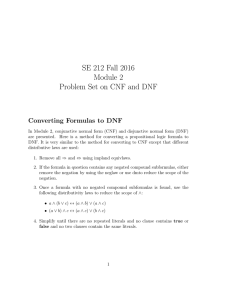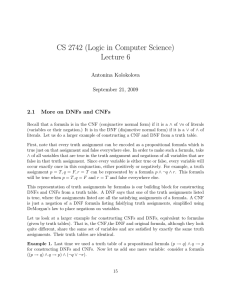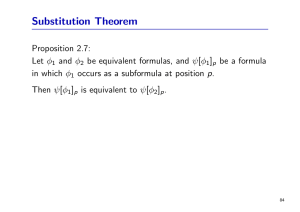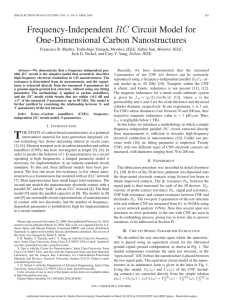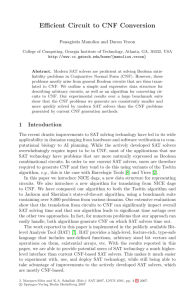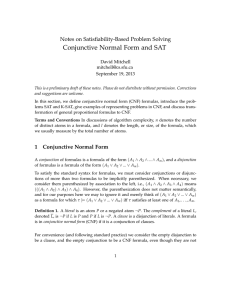Example of SMT Eager Evaluation November 14, 2010
advertisement
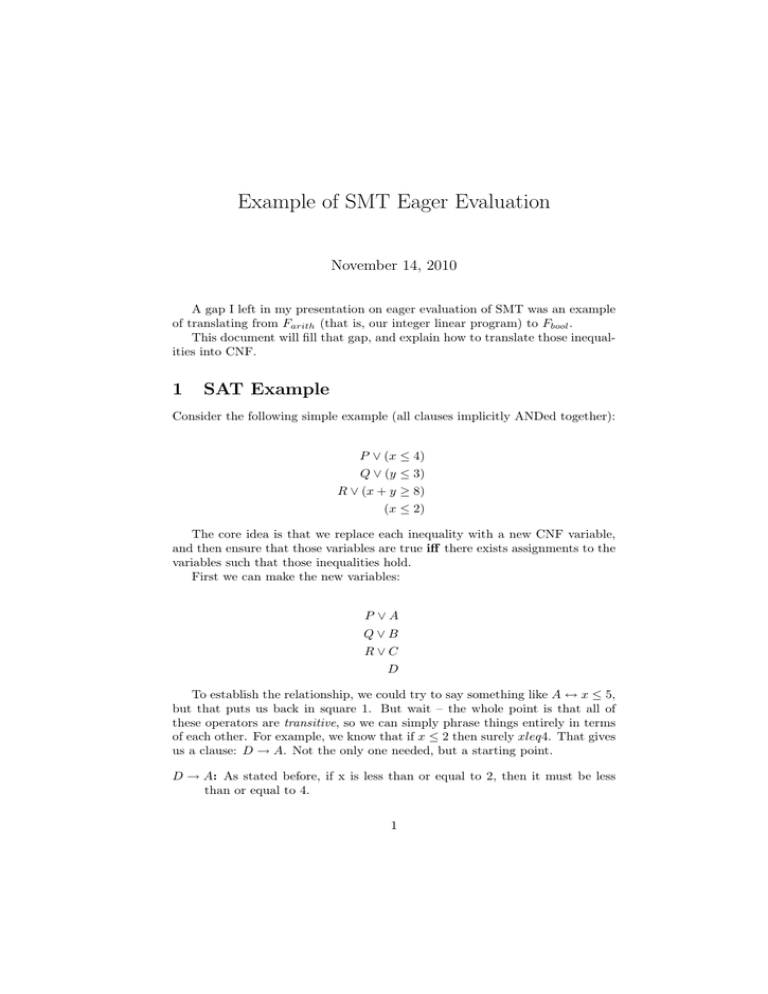
Example of SMT Eager Evaluation November 14, 2010 A gap I left in my presentation on eager evaluation of SMT was an example of translating from Farith (that is, our integer linear program) to Fbool . This document will fill that gap, and explain how to translate those inequalities into CNF. 1 SAT Example Consider the following simple example (all clauses implicitly ANDed together): P ∨ (x ≤ 4) Q ∨ (y ≤ 3) R ∨ (x + y ≥ 8) (x ≤ 2) The core idea is that we replace each inequality with a new CNF variable, and then ensure that those variables are true iff there exists assignments to the variables such that those inequalities hold. First we can make the new variables: P ∨A Q∨B R∨C D To establish the relationship, we could try to say something like A ↔ x ≤ 5, but that puts us back in square 1. But wait – the whole point is that all of these operators are transitive, so we can simply phrase things entirely in terms of each other. For example, we know that if x ≤ 2 then surely xleq4. That gives us a clause: D → A. Not the only one needed, but a starting point. D → A: As stated before, if x is less than or equal to 2, then it must be less than or equal to 4. 1 A ∧ B → ¬C: If both x and y are less than 4 and 3, then they could not possible add to something greater than eight. This also captures the idea that if they do exceed 8, then either A or B must be false. After CNF conversion, A ∧ B → ¬C is the same as C → ¬A ∨ ¬B. So our new big pile of CNF statements are as follows: P ∨A Q∨B R∨C D ¬D ∨ A ¬A ∨ ¬B ∨ ¬C Clearly the original statement was SAT, and this one is no different. 2 UNSAT Example As a quick example of an UNSAT example, consider the following situation: x≤2 x≥y y≥3 We would re-write the statements as A, B, and C, and then establish the following facts (our translation program knows how to do this by definition): A ∧ B → ¬C C ∧ B → ¬A We see that those are really the same statement in CNF form: ¬A ∨ ¬B¬C. We end up with the final CNF: A B C ¬A ∨ ¬B ∨ ¬C This is clearly UNSAT, and intuitively it captures the idea that for the final clause to be satisfied, we would have to ignore at least one of our original inequalities. 2
